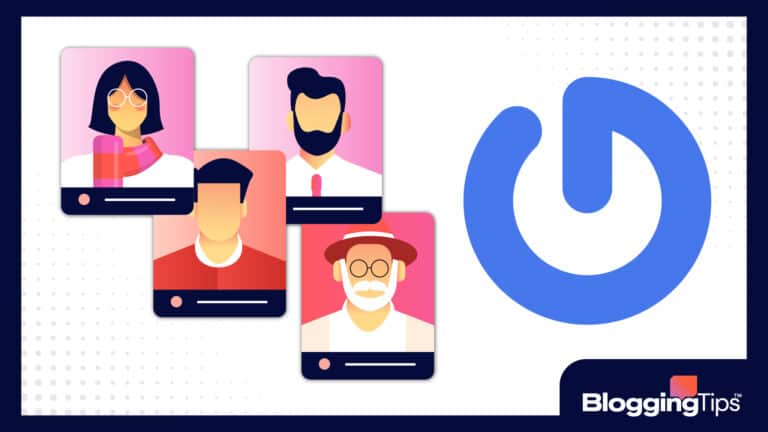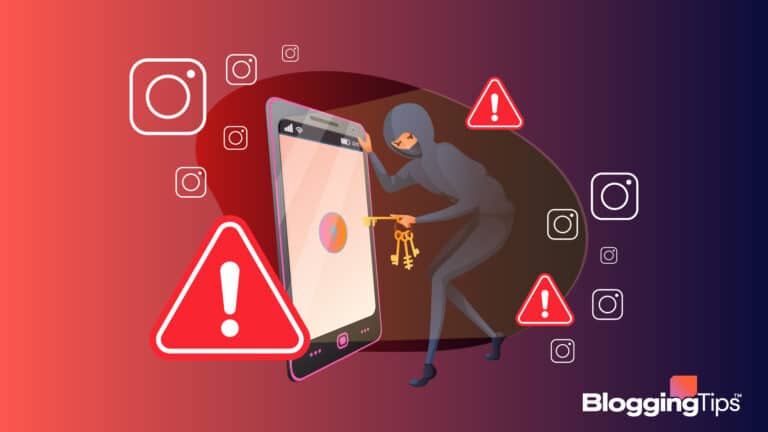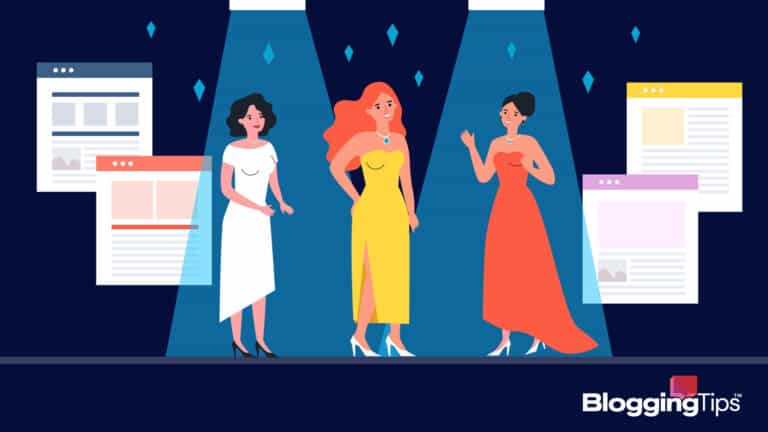There’s a lot to learn when you first start blogging.
You know need to deliver amazing content and have a great looking site – that’s a given.
But how much do you know about all those technical terms that people throw around?
Today we’re talking about RSS. RSS is an acronym for “really simple syndication” and you’ve most likely seen the orange RSS buttons on thousands of different pages.
But do you use it? Do you know what it’s for?
Keep reading to understand the ins and outs of RSS and learn once and for all what it actually means.
What is an RSS Feed?
RSS is a technology that allows people to keep track of their favorite and most visited websites.
Some people refer to it as a “feed” or “news feed.”
People love their RSS feeds because they save time.
With RSS, you no longer have to visit a site you like only to see there are no new posts.
They are also fully customizable.
So instead of visiting a site to see if any new content is posted, you will see the content on your feed reader.
It’s basically a personalized aggregator of all the sites you care about on the internet.
How Do You Use RSS?
The first thing you’ll need is an RSS feed reader.
If you use Google Chrome, there are several RSS reader extensions.
There are also websites like Feedly with beautiful user interfaces that make it super easy to see all your favorite content in one place.
When you’re ready to see what’s new on your favorite sites you can visit your RSS reader online or on a mobile device using an app to access your feeds and see your updates.
RSS readers look a bit like email, where new feeds and new posts get highlighted in bold print so you know which ones you haven’t opened yet.
With an RSS reader, you have the option to read a post right there in the reader or click to the actual website.
Depending on the type of site and your level of interaction with that site, you may want to go to the site itself.
It’s up to you how and where you want to view it.
Once you click on a post you’ll see the latest update.
When you move onto the next post it will mark the previous one as read.
RSS readers are very easy to use and make it extremely easy to view all newly published content in one place.
There are many RSS readers available to choose from, and while they all provide a similar service, they can be quite different.
Some of the most popular feed readers include Feedly, Old Reader, and Inoreader.
Feedly is the most popular RSS reader and has over 14 million users.
It’s the largest RSS reader available and it’s quite easy to use.
They’ve has been around since 2008, and they’ve added some features over the years.
Like all RSS readers, Feedly receives your headlines and site posts. You can track up to 100 sources with its free subscription service.
[su_youtube url=”https://www.youtube.com/watch?v=Y9AZEiWYCHo”]
With Feedly, you can categorize your posts into different categories.
This way, you can separate your sports feeds from your news feeds from your fashion feeds and other topics.You’ll also see a rating that indicates how popular a story is.
Some readers love this feature as it allows you to bypass feeds that aren’t getting much interest from other users.
Feedly offers a variety of other options as well.
It allows you to track tweets from people you follow on Twitter and follow the progress of certain hashtags.
It can also alert you when new YouTube videos get posted to channels you follow.
You can even track keywords and news about your company, a particular product, or a particular business.
Another good option for an RSS reader is Inoreader.
Inoreader offers lots of free features including unlimited tags and certain integrations.
This free service is user-friendly and with apps for iOS and Android, you can create offline folders so you can read anytime, anywhere.
About one million RSS users prefer the reading services of Old Reader.
This RSS reader is basic and easy to use, making it a favorite for people who aren’t looking for lots of extra features and distractions.
If you find something you’d like to share, you can share posts with friends who also use Old Reader.
When you share posts, you can join in discussions about those posts within your network of Old Reader friends.
There are a variety of other great RSS readers out there, such as Feedbin, gReader, and Newsify.
Take a few minutes to check out the differences between each one or test them out by adding a few feeds to each.
You’ll want to select one that is easy to use from your PC, Mac, iOS, or Android device.
How Do You Subscribe to an RSS Feed?
There are two easy ways that you can subscribe to an RSS feed.
You can do it through your browser or do it on the website you want to follow.
It’s hard not to take notice of all those little widgets and buttons that appear on every website.
Some are counters that show how many readers or subscribers a blog has.
Some are links to XML and ATOM.
But the one that matters today is the little orange button for RSS.
Whenever you see any of these little buttons that usually means that the blog has a feed you can subscribe to.
The easiest way to subscribe to an RSS feed is to click on the orange button and follow the instructions to subscribe.
Or, you can copy and paste the link into your RSS reader, adding it to the other pages you follow and track.
You can also search for feeds within most RSS Readers.
On sites like Feedly, when you search for a topic or feed, they will also show suggested feeds.
This makes it super easy to fill your feed with relevant content.
[su_youtube url=”https://www.youtube.com/watch?v=0klgLsSxGsU”]
The other way to subscribe to a feed is to use your browser.
Most browsers have the ability to find and subscribe to RSS feeds built into them.
To tell if a site you like has an RSS feed look at the right-hand side of the address bar where you type in the URL.
In Firefox, you’ll see the classic little orange button (this is the standard RSS icon) to the right of the URL box.
In Safari, you’ll see a blue icon that indicates the site has an RSS feed.
These don’t always appear, but it’s great when they work.
Subscribing is easy.
So easy that many of us find ourselves subscribing to sites we intend to read but never get a chance to.
It’s always a good idea to go through your feed every once in a while and clean up your subscriptions.
Once you have your feeds set, you will have a custom news aggregator that you can change at any time!
Do I Need to Use an RSS Reader?
There is an alternative to using an RSS reader – it’s called good old fashioned email.
Many sites offer the option for you to subscribe to their RSS feed without having to use the services of an RSS reader.
Rather than sending the feed to an RSS reader, they will alert you with an email with a headline of their newest post.
In some cases, you can read it right there in your inbox. In other cases, you may need to visit the website to read the full story.
For those of you who can’t bear the thought of having another site or app to check every day, having feeds sent straight to your inbox is a welcome option.
Depending on how many sites you subscribe to and how often they post, this can clog up your inbox pretty fast.
But it’s ideal for anyone who likes to see all their important info in one easy place.
How Can I Add RSS To My Blog?
Thinking about adding an RSS button to your blog?
You should.
If your readers already subscribe to a variety of other blogs and your site doesn’t let them add your updates their feed, they might forget about you.
Don’t let that happen.
Most blogs have a footer that offers the option for readers to subscribe to your posts.
This is pretty much the same as subscribing to your RSS feed, but having that little orange button on your site is key.
Most readers will look for that orange RSS button.
Adding it to your site is an effective way to keep readership and update your readers when you post new content.
There are different ways to add the RSS button to your blog, depending on what blogging platform you use.
WordPress, Blogger, TypePad, and other platforms all have their own ways to add the RSS option.
- http://example.com/?feed=rss
- http://example.com/?feed=rss2
- http://example.com/?feed=rdf
- http://example.com/?feed=atom
Is none of those work, it might have to do with your permalink settings.
For more information, check out this post from WordPress.org.
Blogger and TypePad use a similar structure.
To find out, search the help section on your platform for step-by-step instructions on how to add that recognizable orange button to your site.
To Sum it All Up…
Really Simple Syndication makes it easy to follow the pages you want and receive updates when new content gets posted.
It also allows you to keep track of all your favorite sites in one convenient place.
If you haven’t used RSS before, try it out.
With a free RSS reader or app on your phone, you can see how easy it is to use.
If you have various sites you like to follow, RSS will definitely save you time. Instead of wasting time clicking on a site to see if they’ve posted anything new you can spend that time reading posts that are already published.
There are many RSS readers available for use, so take a bit of time to figure out which one you prefer.\
If you don’t want another app to check, you can always have your RSS feeds sent straight to your inbox.
If you’re a blogger, it’s important to offer an RSS feed to your readers.
While many readers don’t make use of RSS, there are plenty who do.
Don’t let your blog get left out in the cold because you don’t offer readers the option to subscribe.
Check with your CMS to learn exactly how to add the RSS button to your page.
If you’ve got good content and decent readership, it shouldn’t be long before you see people adding your blog to their RSS feeds.







